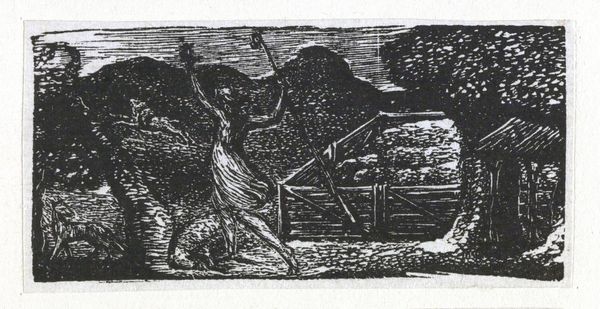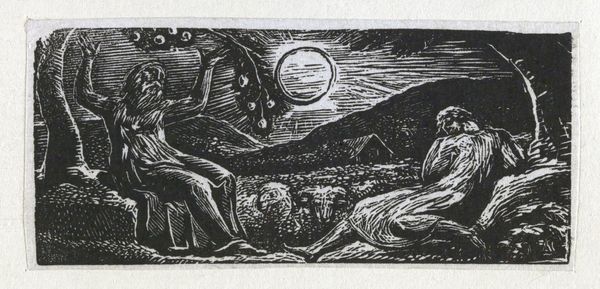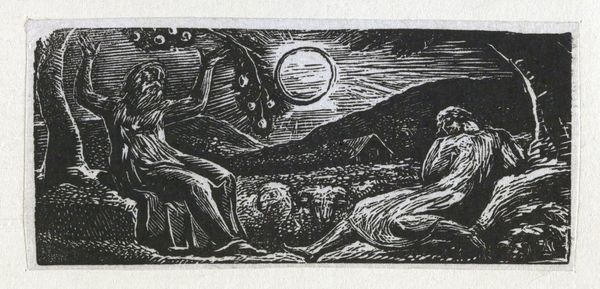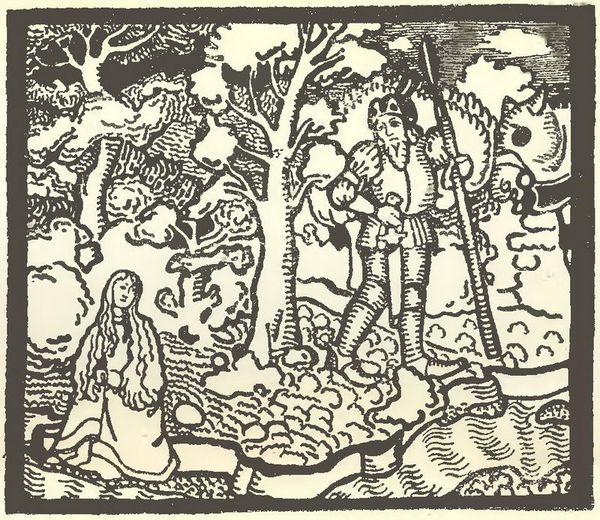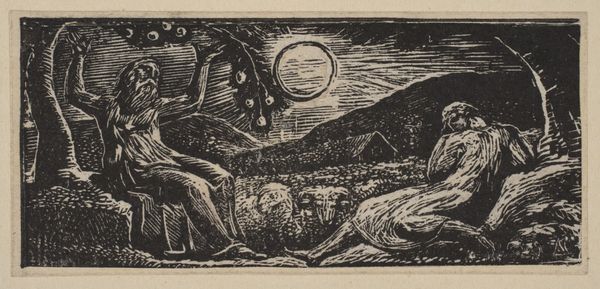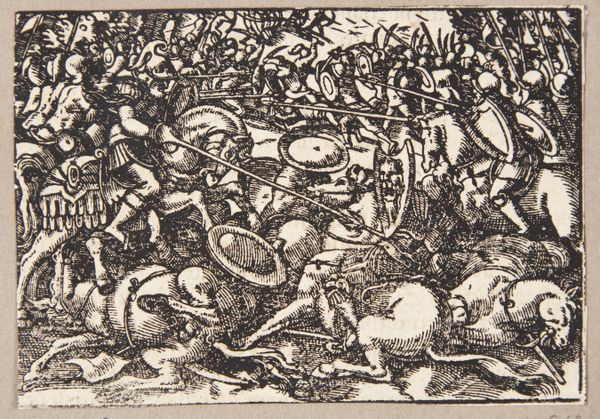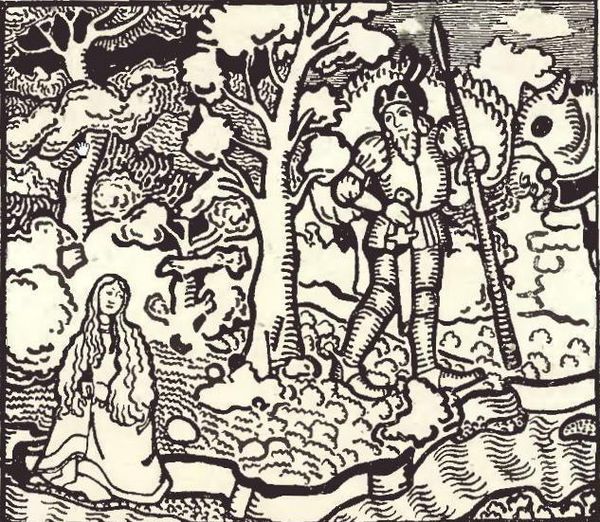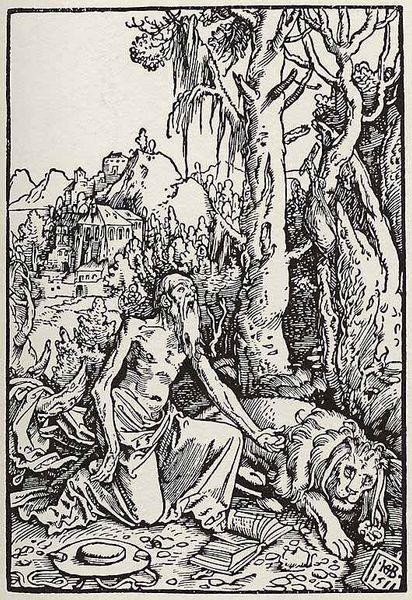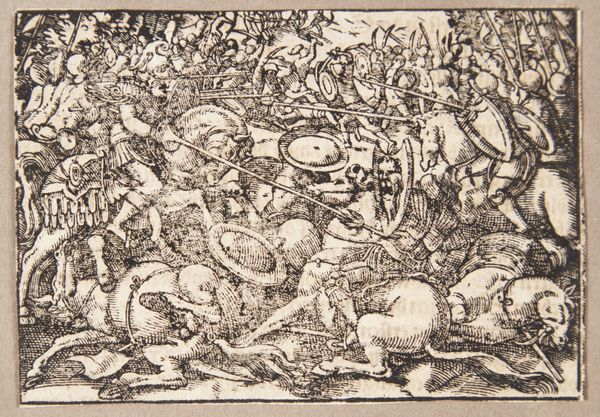
print, woodcut
#
portrait
# print
#
landscape
#
woodcut
#
surrealism
#
russian-avant-garde
#
genre-painting
Copyright: Public domain
Curator: Boris Kustodiev's "Autumn," created in 1926, offers a striking example of his woodcut prints from the Russian avant-garde period. What's your immediate response to this composition? Editor: It feels melancholic. The high-contrast woodcut rendering creates this sense of both idyllic serenity and underlying somberness. The round shape encloses a wistful stillness. Curator: The technical execution itself is quite intriguing. Consider how the stark contrast is meticulously crafted to build textures and spatial depth, from the intricate folds of the woman’s dress to the receding plane of the trees. Editor: Right. The patterned dress, that dense foliage—it feels characteristically rural. Is Kustodiev perhaps offering a constructed, idyllic version of peasant life that masks deeper societal shifts happening then? Curator: Potentially. Given the era, he might be engaging with the prevailing romanticized image of rural life popular in the early Soviet period. The style shows influences from the Russian avant-garde, with its flattening of forms, simplified shapes, and deliberate use of bold contrasts. The flattening can suggest both tradition and novelty. Editor: I’m seeing this almost theatrical framing of a timeless folk tale – she could be waiting in the forest, a figure pulled out from local lore and nestled amongst her livestock near the village, a cultural touchstone. Her introspective glance, along with the visual quietness makes the work evocative and powerful. Curator: Indeed. This print demonstrates how Kustodiev’s work acts as both a mirror and a lens—reflecting idealized folk traditions and casting forward with innovative compositional devices. Its emotional potency resides not just in its depiction, but also its formal qualities. Editor: It certainly provides more than a glimpse; a narrative held tight, preserved by an awareness of both present and past. Curator: A compelling observation. The potency of a landscape intertwined with the politics of nostalgia.
Comments
No comments
Be the first to comment and join the conversation on the ultimate creative platform.

